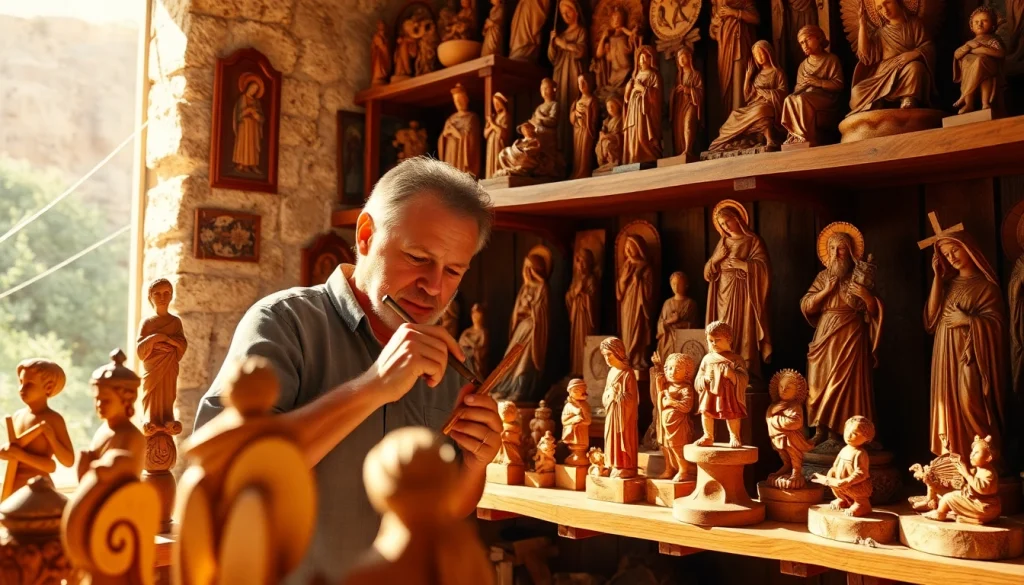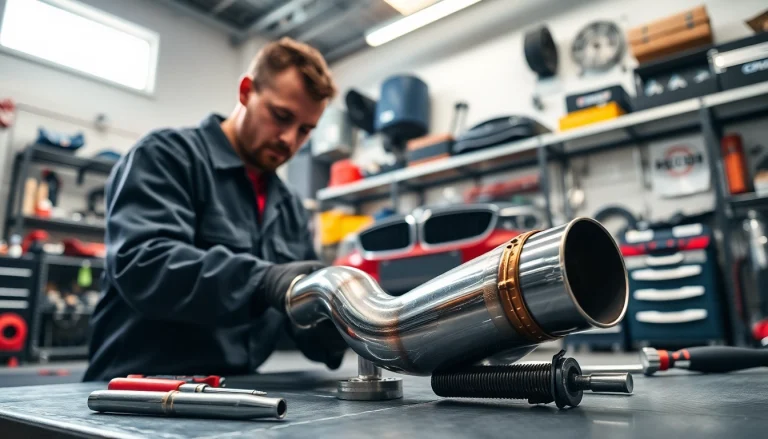
Understanding Olive Wood Carvings
Olive wood carvings are not merely decorative art pieces; they embody a rich heritage and cultural significance, especially in the region of the Holy Land. Renowned for their beauty and craftsmanship, these carvings resonate with spiritual beliefs and are often linked to Christian traditions. The unique grain and warm hues of olive wood make each carving a stunning showcase of artistry. For those seeking authentic representations, olive wood carvings offer a tangible connection to history, culture, and spirituality.
What Are Olive Wood Carvings?
Olive wood carvings are handcrafted sculptures and figures made from the wood of the olive tree, which is native to Mediterranean regions, particularly around the Holy Land. Artisans meticulously carve these pieces from the wood’s dense and durable grain, resulting in artistry that is both aesthetically pleasing and robust. The variety of items produced includes religious icons, nativity scenes, crosses, serving utensils, and decorative pieces, all varying in size and complexity.
The Significance of Olive Wood in Culture
Throughout history, olive trees have symbolized peace, wisdom, and enlightenment. In many cultures, they are revered not only for their fruit but also for their wood, which has been used for thousands of years in various forms of art and utility. The cultivation and carving of olive wood are particularly prominent in regions like Bethlehem, where local artisans have honed their craft for generations. These carvings serve as powerful representations of faith, tradition, and resilience, intertwining the natural beauty of the olive tree with the cultural narratives of the communities around it.
Common Styles and Techniques Used in Carvings
Various techniques and styles characterize olive wood carving. Traditional methods often involve hand tools, and the craftsmanship is deeply rooted in family traditions. Carvings can vary from intricate nativity scenes to simple, yet elegant, cross designs. Some artisans employ a technique known as “chip carving,” which involves removing chips of wood to create detailed patterns and shapes. Others utilize a smooth finish technique that highlights the wood’s natural grain, resulting in a seamless and polished look that enhances the beauty of the olive wood.
Choosing Authentic Olive Wood Carvings
Finding authentic olive wood carvings requires discernment. Authentic pieces not only represent the heritage of the region but also ensure quality craftsmanship and materials. Various factors come into play when selecting the right carving for your collection or gift-giving.
Identifying Genuine Artisans and Products
When purchasing olive wood carvings, it’s essential to identify reputable artisans or businesses. Genuine artisans from Bethlehem or the surrounding areas often take pride in their work, offering information about their materials and techniques. Look for certifications or labels that guarantee authenticity, such as “Made in Palestine” or information about the artisan’s background.
Where to Buy Quality Olive Wood Carvings
Quality olive wood carvings can be found in various places, ranging from local art galleries in the Holy Land to online platforms dedicated to promoting Palestinian crafts. Engaging with local markets not only supports artisans but also provides insight into the stories behind each piece. Online stores committed to fair trade and artisanal practices also offer a broad selection of carvings. For instance, sites that emphasize the story and craftsmanship behind each piece often ensure products are ethically sourced.
Evaluating the Quality and Craftsmanship
The quality of olive wood carvings is determined by various factors, including the intricacy of design, finish, and the care taken throughout the crafting process. Authentic pieces will display even grain patterns and will feel smooth to the touch. Inspect the craftsmanship closely; areas of roughness or poorly defined features can indicate inferior quality or mass-produced items. A truly great olive wood carving often reflects the artisan’s skill and passion, making it a unique piece of art.
Uses of Olive Wood Carvings
Olive wood carvings serve diverse purposes beyond their aesthetic appeal. They are often sought after as gifts, religious symbols, and unique home accents that hold deeper meanings.
Decorative Home Accents and Gifts
Many individuals choose olive wood carvings as decorative home accents that add warmth and character to living spaces. Items such as bowls, platters, and sculptures are not only functional but also act as conversation starters. Gift-giving becomes more meaningful with these carvings, as they represent a part of the Holy Land’s rich culture and artistry. For weddings, anniversaries, or personal milestones, olive wood gifts can embody heartfelt sentiments and cherished memories.
Religious Significance and Symbolism
In addition to decoration, olive wood carvings often carry significant religious connotations, particularly in Christian traditions. Items like crosses and nativity scenes play a central role in many homes and churches, serving reminders of faith and spirituality. The act of gifting such items can symbolize blessings, faith, and a connection to the Christian heritage found in the Holy Land.
Creating Engaging Displays with Olive Wood Art
Olive wood carvings also serve an essential role in creating engaging displays in homes and religious settings. Proper arrangement of sculptures, figures, and other carvings can elevate the ambiance of a space. By incorporating varied heights, textures, and complementary colors, one can create an inviting aesthetic that captures the essence of the Holy Land while celebrating the artistry involved in each piece.
Caring for Olive Wood Carvings
To ensure the longevity and beauty of olive wood carvings, proper care and maintenance are crucial. These pieces, though robust, can suffer from neglect or improper handling.
Maintenance Tips for Longevity
Regular maintenance is essential to preserve the beauty of olive wood carvings. Dusting with a soft cloth should be done frequently to prevent dirt accumulation. For items used regularly, such as serving utensils, it is advisable to wash with mild soap and water and to dry them thoroughly immediately afterward.
Clean and Preserve Your Olive Wood Items
Rather than soaking wooden items, it’s essential to clean them lightly. The use of mineral oil can help maintain the wood’s luster. Apply a small amount to a soft cloth and gently rub the wood to keep it moisturized. This will help prevent cracking and drying out of the wood, extending the life of the piece.
Restoration Techniques for Damaged Carvings
In cases of damage, such as scratches or minor cracks, many restorers recommend using wood glue to repair cracks or rough areas. For surface scratches, fine-grit sandpaper can be used carefully to smooth out the affected area, followed by a coat of mineral oil to restore shine. For severe damage, consulting a professional who specializes in restoring wooden art may be necessary.
The Legacy of Olive Wood Carving
The legacy of olive wood carving is a testament to the enduring human spirit and artistry. As we delve into its history, craftsmanship, contemporary trends, and future, we see the evolution of this beautiful art form.
Historical Context and Craftsmanship Evolution
Olive wood carving has roots deep in history, with evidence of its practice dating back centuries. Artisans have handed down techniques through generations, ensuring the survival of this form of artistic expression. The craftsmanship has evolved over time, where simple tools once dominated the process, giving way to diverse techniques and designs that reflect modern aesthetic sensibilities while retaining traditional motifs.
Contemporary Trends in Olive Wood Art
In contemporary settings, artistic exploration has led to unique designs blending traditional elements with modern artistry. Many artisans are embracing innovation, creating pieces that speak to both tradition and contemporary appreciation. Collaborative projects, such as combining olive wood with other materials like metals or glass, are emerging, attracting collectors and enthusiasts alike.
The Future of Olive Wood Carvings: Challenges and Opportunities
While the future of olive wood carving looks promising, it faces several challenges such as environmental sustainability and changing consumer preferences. Ensuring the sustainability of olive wood sources is paramount, as overharvesting and environmental changes threaten tree populations. However, this challenge presents an opportunity for artisans to innovate sustainable practices and promote environmental consciousness in their crafts.Efforts to raise awareness about the cultural significance of olive wood carvings also provide a promising avenue for growth, drawing attention to the stories and heritage behind every piece.






